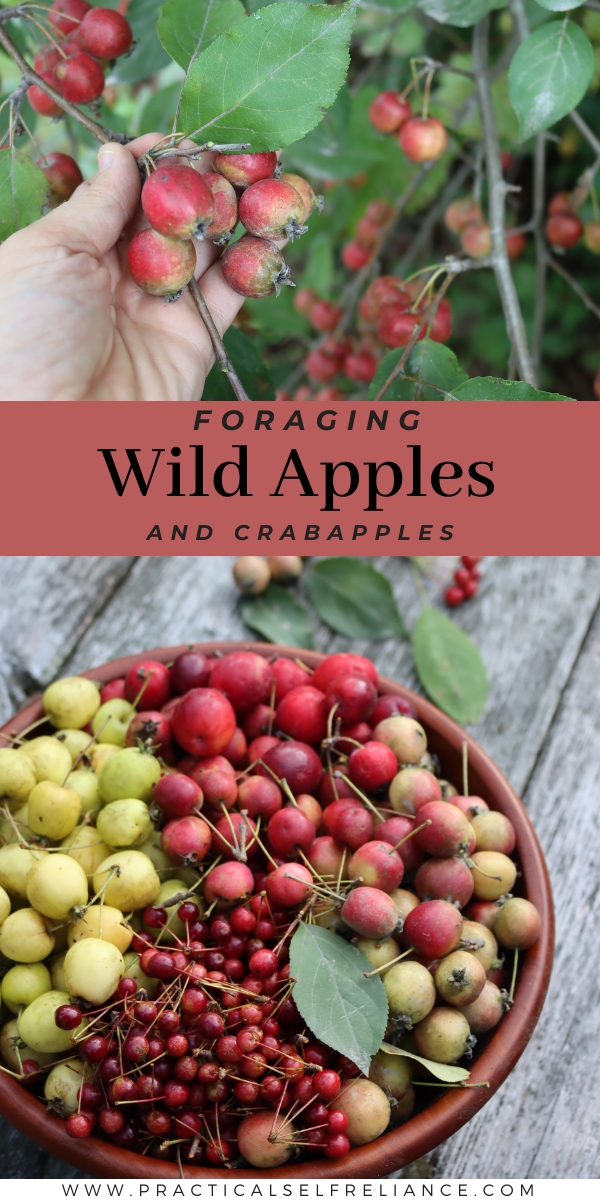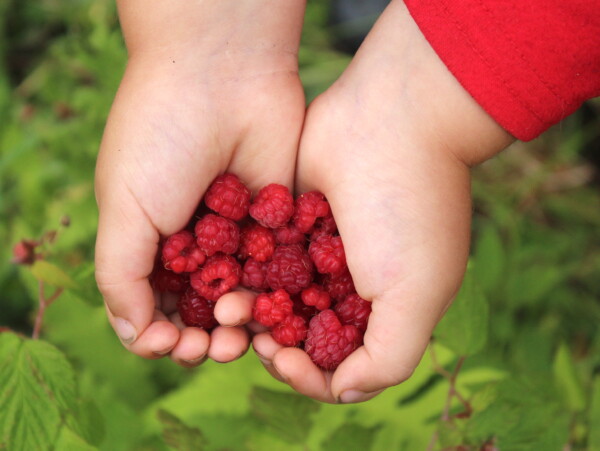Affiliate disclosure: This post may contain affiliate links. Please see our Privacy Policy.
Wild apples and crabapples (Malus sp.) are easy to identify wild edible fruits that are available just about everywhere in the US.
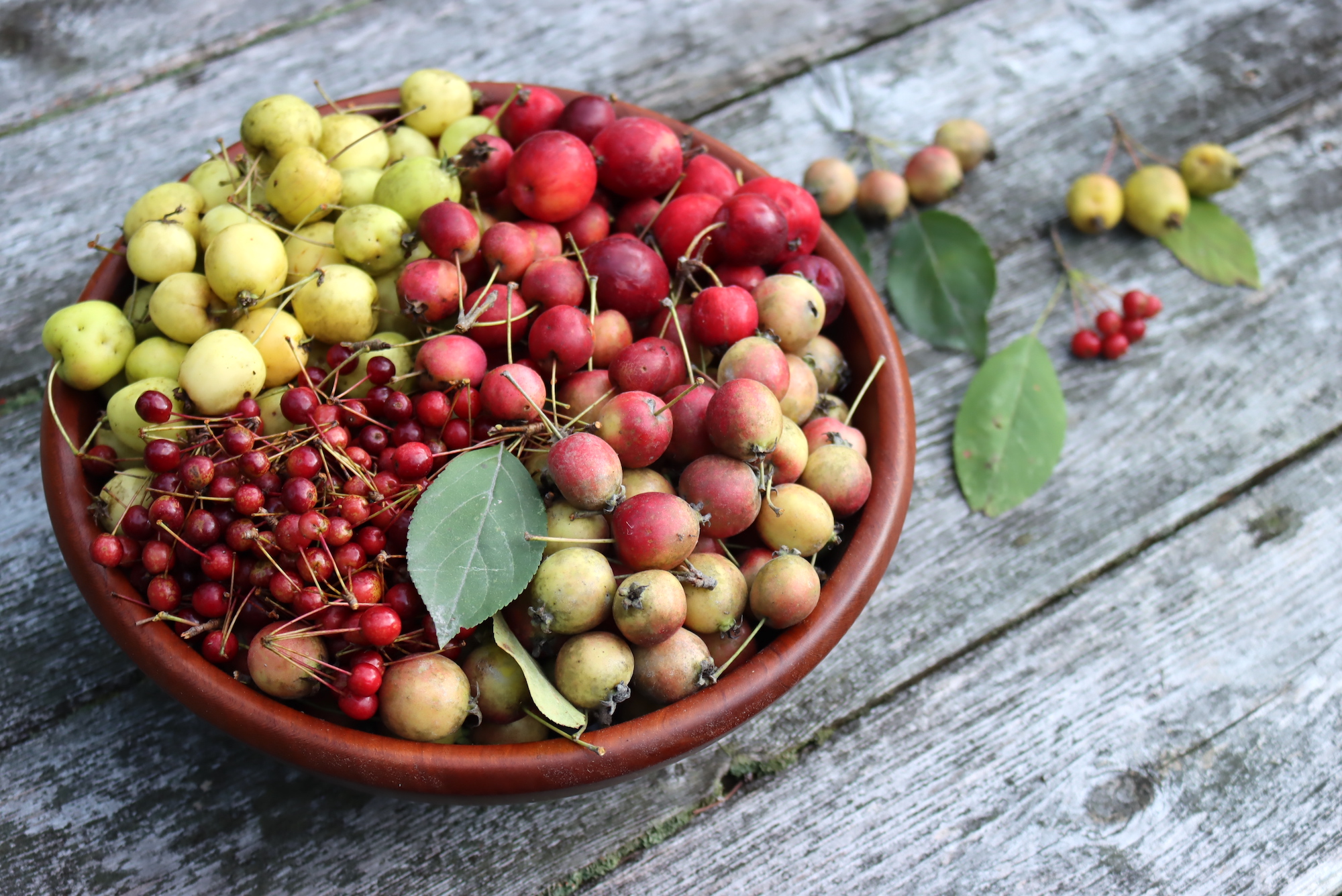
Here in Vermont, it’s hard to walk more than a short distance down any back country road without encountering at least a few wild apples. They grow everywhere, spread by birds, squirrels, raccoons, deer and people alike. Just about everyone loves a good apple, and while some might be a bit tannic, wildlife tend to select for the sweet juicy ones just like people do.
The best ones get spread the farthest, and more often than not, wild apples and crabapples are well worth the effort.
(And even the tannic ones are still great for making hard cider!)
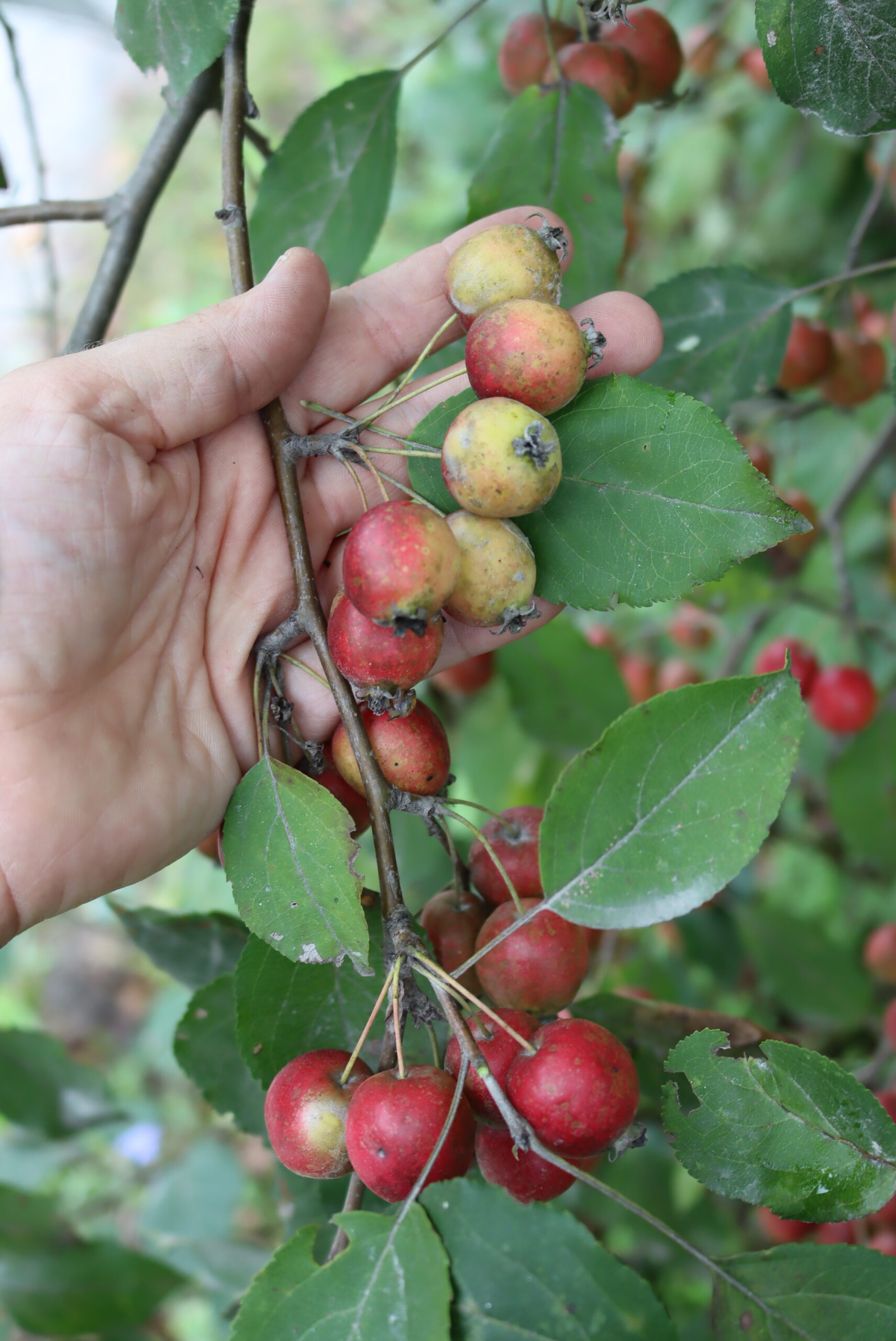
What are Wild Apples?
Wild apples, crabapples, and even domestic apples are all in the Malus genus, a group of about 32 species of deciduous, perennial trees and shrubs in the Rosaceae or Rose family.
Generally, when we think about apples, we think about the domesticated apple (Malus domestica) whose wild ancestor, Malus sieversii, is native to central Asia.
However, several Malus species are native to North America, including the Sweet Crabapple (Malus coronaria), the Pacific Crabapple (Malus fusca), the Southern Crabapple (Malus angustifolia), and the Prairie Crabapple (Malus ioensis).
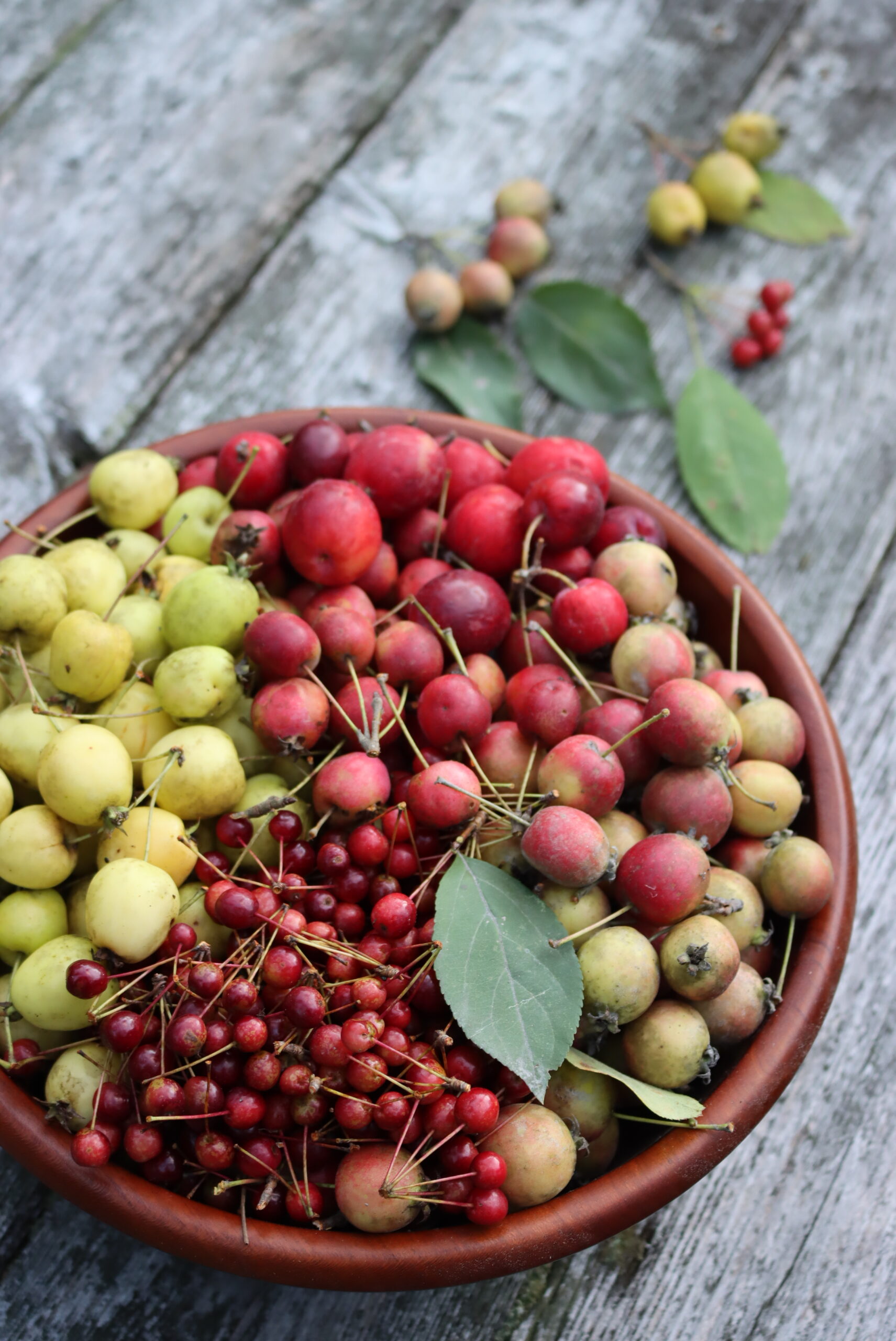
Are Wild Apples Edible?
Wild apples and crabapples may be a bit different from their domesticated cousins, but they’re still edible and tasty when prepared well! Many wild apples have a more tart flavor than domesticated apples, so some foragers find they’re best for cooking, cider-making, and preserving.
Herbalists also use wild apples and their bark, leaves, and blossoms in internal and external preparations. However, the leaves and bark of apples are very astringent and may cause an upset stomach and other illnesses in large quantities.
Livestock, such as rabbits, cattle, and goats, also enjoy wild apples and will feed on the fruit, leaves, and bark.
Like domestic apples, the seeds of wild apples contain cyanide compounds and shouldn’t be consumed in large quantities.
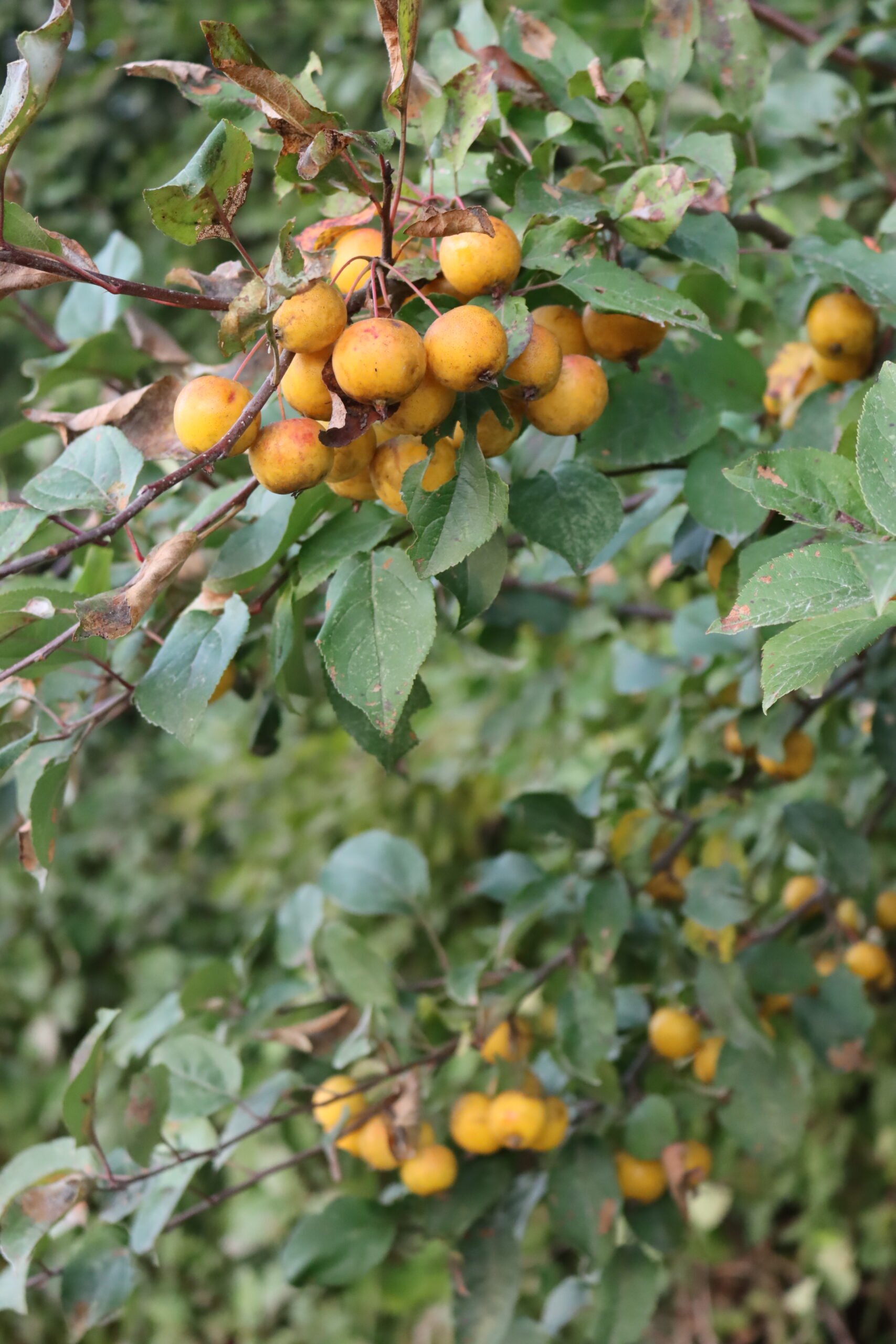
Wild Apples Medicinal Benefits
The saying “ An apple a day keeps the doctor away” has a long history and probably originated as “ To eat an apple going to bed will make the doctor beg his bread,” which was first recorded in Wales in 1866. Herbalists of the period believed that eating an apple in the evening, particularly sour wild apples, helped to prevent and relieve constipation, stimulate appetite, and reduce bloating.
These tart wild apples may also help improve digestion, which is why people of the past often used wild apples in sauces or raw to pair with rich foods like goose, pork, or slices of cheese. Additionally, crisp, tart apples were believed to help clean the teeth after mealtime.
Historically, herbalists made bark infusions to treat fevers and aid the kidneys, liver, and spleen. They also used apples externally in ointments and washes to treat skin infections and eye issues.
One of the wild apples’ more famous historical mentions is in the Nigon Wyrta Galdor, or “The Nine Herbs Charm.” This is an old English healing spell intended to treat a wound.
Modern research has supported the use of wild apples in skin treatments. A 2022 study in the Journal of Cosmetic Dermatology found that wild apple fruit extract was a good source of bioactive substances for skin care and had good hydration effects on human skin.
Other research has examined the internal benefits of wild apples. A study from Food Bioscience in 2020 found that Wild Apples are a good, natural source of vitamin C and antioxidants for use in medicine and food additives.
A study from the Journal of Medicinal Herbs and Ethnomedicine completed in 2017 also found that wild apple juice is highly nutritional. The study found that the juice has broad-spectrum antibacterial activity. Researchers noted that it has “considerable activity against drug-resistant pathogens such as Methicillin Resistant Staphylococcus aureus (MRSA), Vancomycin Resistant Enterococci (VRE) and Extended Spectrum β-Lactamases (ESBL) producing Gram Negative bacteria.”
Further, the regular consumption of whole apples of any kind has been linked with a reduced risk for type II diabetes. This may be because apples are rich in fiber, antioxidants, and phytochemicals, which have beneficial health effects.
Where to Find Wild Apples
Wild apples grow throughout the world’s northern temperate regions in Europe, North America, and Asia.
Wild apples include a diverse range of species that have adapted to varying habitats. The two apples native to the eastern United States Sweet Crabapple (Malus coronaria) and the Southern Crabapple (Malus angustifolia), often grow in open woodlands, along forest edges, and near river and stream banks. They thrive in rich, moist soil and do well in partial shade or full sun.
The Pacific Crabapple (Malus fusca), native to the western United States, often grows in coniferous forests but can also be found in maritime areas. It can grow in regions with high rainfall and tolerates heavy clay and wet soil, including around saltwater estuaries.
On the other hand, the Prairie Crabapple (Malus ioensis) was once common throughout the midwestern prairies and savannahs of the United States. It thrives in full sun to partial shade. This crabapple does best in moist, well-drained soil but will tolerate dry sights.
It’s also common to find crab apples, domesticated apples, and hybrids growing amongst the ruins of old abandoned homesteads and cellar holes.
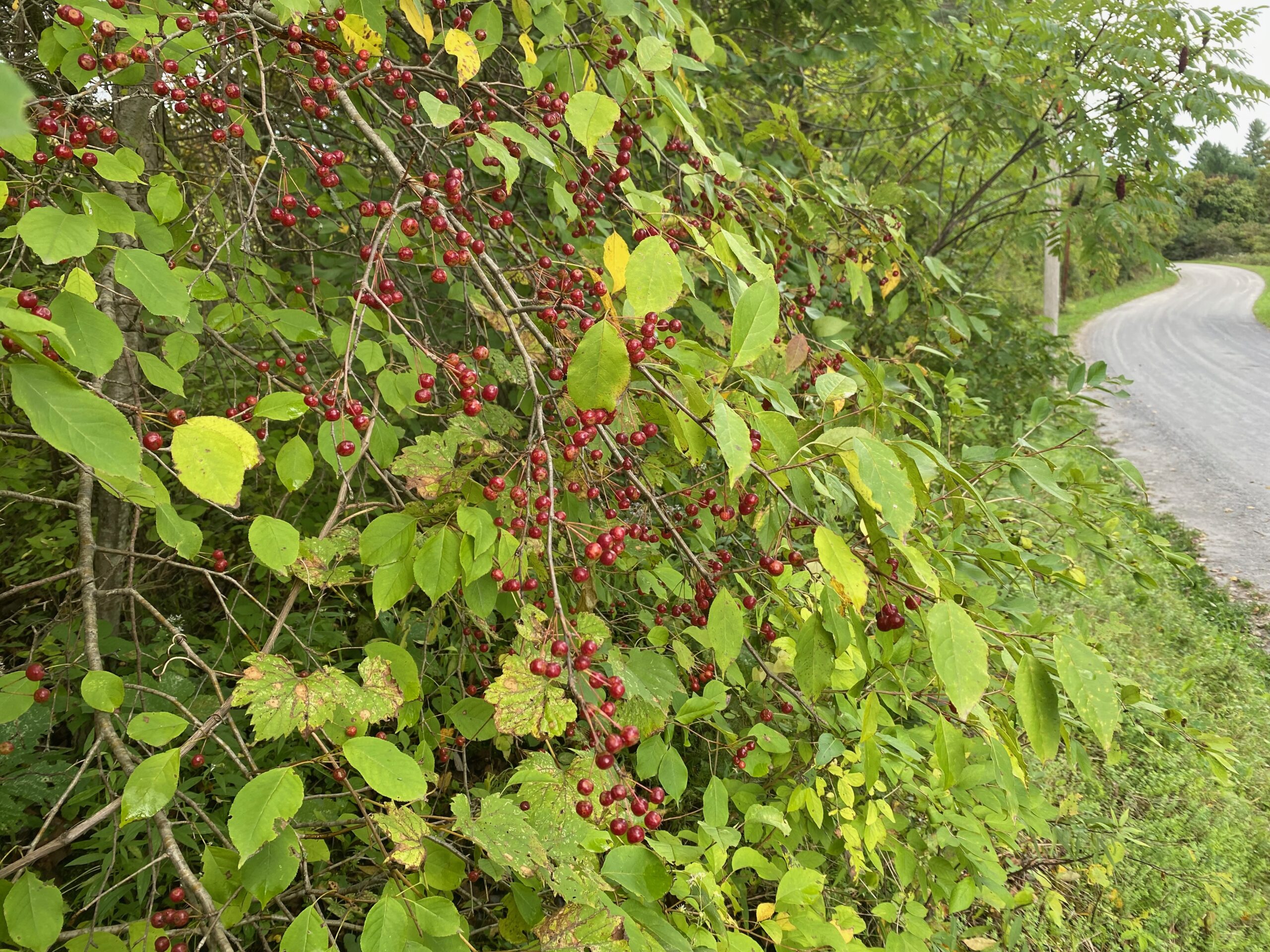
When to Find Wild Apples
Once familiar with the trees, you can learn to spot wild apples year-round and revisit them as the fruit is ripening. Wild apples ripen in the autumn, but the exact time varies with your location and the species.
Pacific Crabapples (Malus fusca) and Southern Crabapples (Malus angustifolia) often begin ripening in late August or September. Sweet Crabapples (Malus coronaria) and Prarie Crabapples (Malus ioensis) usually ripen in September or October.
Some foragers like to wait until the first fall frost has softened and sweetened their wild apples. However, you may risk losing them to the birds if you wait too long, but the fruits can persist into the winter in a good year.
Especially in dry areas, good rainy summers often lead to more and sweeter tasting fruit.
Identifying Wild Apples
Though there are many wild apple species, they all tend to exhibit a few similar characteristics that can help you identify them. Wild apples are smaller trees or shrubs with dense, twiggy crowns. Their conspicuous, fragrant blooms in spring and small pomes or fruits in the fall often help set them apart.
Wild Apple Leaves
Though they vary some with species, wild apple leaves are usually simple, alternate, and 1 ¼ to 4 inches long with serrated margins. They are typically dark green above and pale beneath.
The leaves of the Pacific Crabapple (Malus fusca) are irregularly lobed with pointed at the ends. In contrast, Prairie Crabapple (Malus ioensis) leaves have egg-shaped leaves and rounded tips. Some of its larger leaves usually feature shallow lobes.
Sweet Crabapple (Malus coronaria) leaves tend to be more oval with pointed tips. In contrast, Southern Crabapple (Malus angustifolia) leaves are elliptic to oblong with wavy-toothed margins and blunt tips.
Wild apple leaves tend to be showy in autumn, ranging from shades of yellow to orange or red, depending on the species.
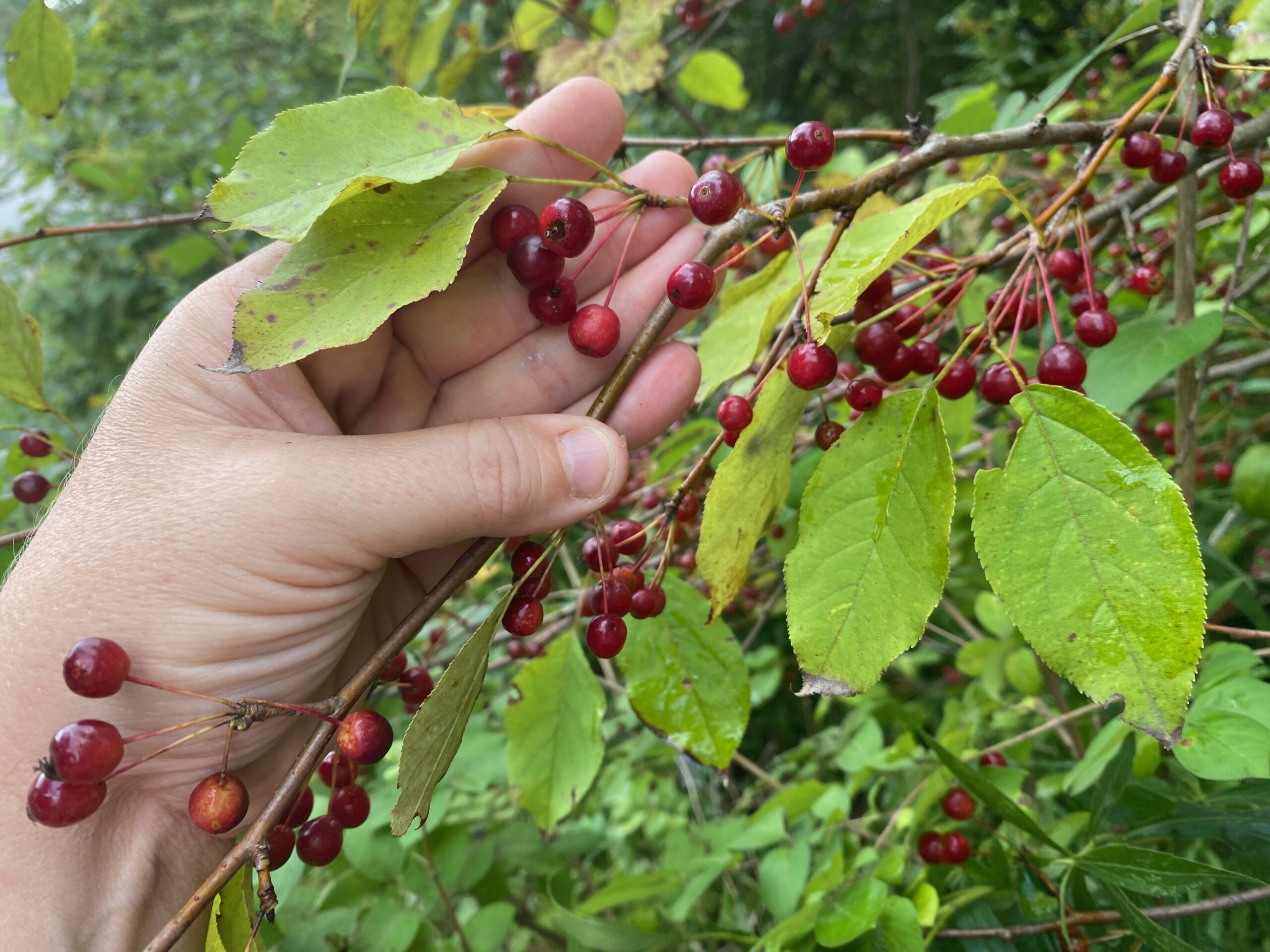
Wild Apple Stems
Wild Apples tend to grow between 13 and 45 feet tall. The bark on the trunk is usually reddish-brown, brown, or gray, with longitudinal fissures that separate it into narrow, scaly ridges. This outer bark may peel away on some species, like the Prairie Crabapple (Malus ioensis), to reveal reddish inner bark.
Wild apples tend to have twiggy crowns, similar to domestic apples. Typically, the young stems of wild apples are coated in thick, white wooly hairs. However, they lose the hair as they develop and become smooth reddish-brown. Many wild apples, like the Sweet Crabapple (Malus coronaria), have small points or thorns on at least a few branches.
Wild Apple Flowers
Wild apples flower in early spring, producing conspicuous, fragrant blooms in corymbs or clusters on young shoots. They flower after leafing out. The flowers have five petals and may be white, pink, or red with yellow, pink, or red stamens. On most species, the flowers are about 1 to 2 inches across.
Pacific Crabapple (Malus fusca) flowers range from white to pink, while Prairie Crabapple (Malus ioensis) flowers start as deep pink buds and open to white flowers. Sweet Crabapples (Malus coronaria) usually have pink or rose-colored flowers, and Southern Crabapples (Malus angustifolia) have similar pink blooms.
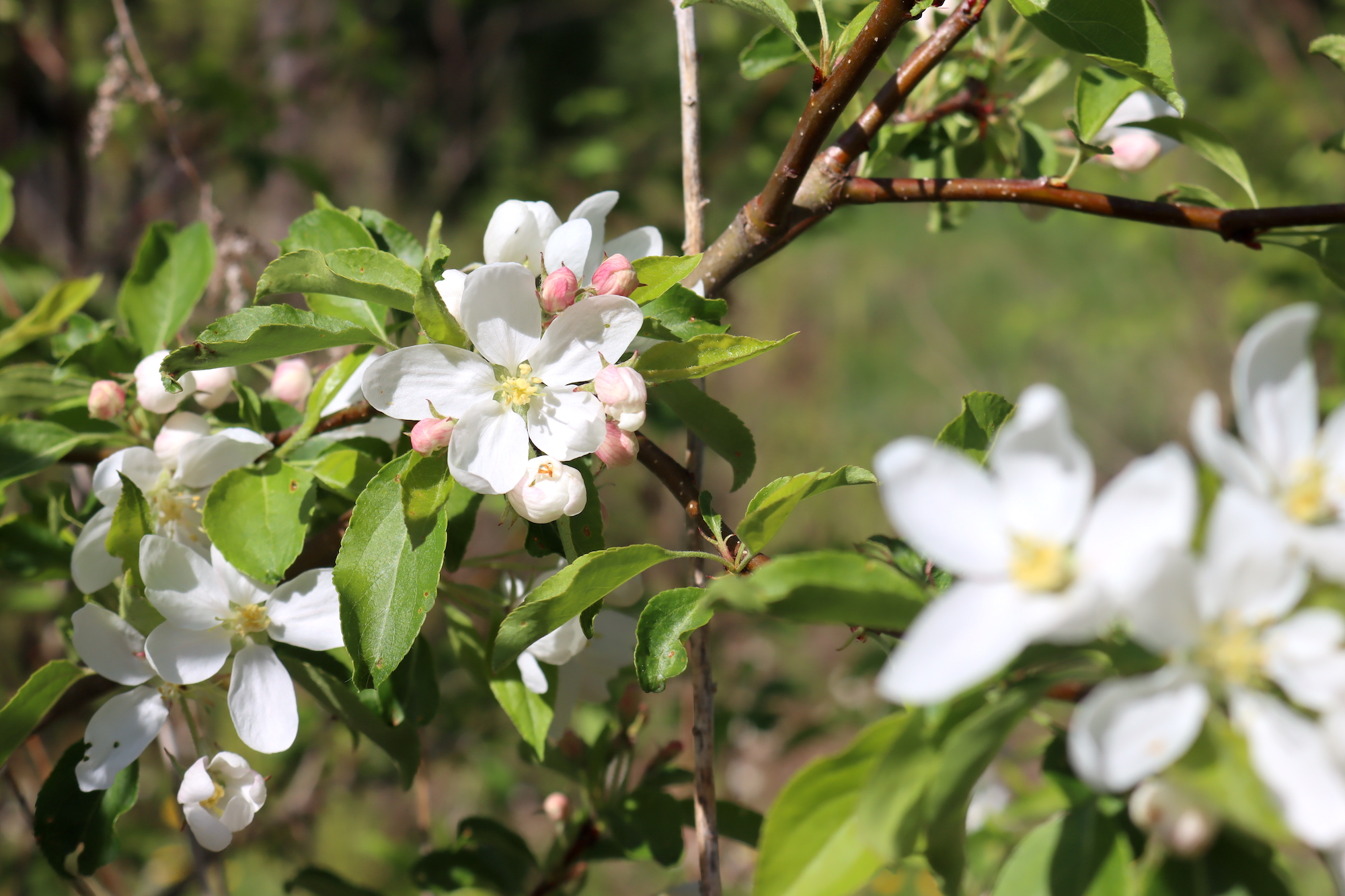
Wild Apple Fruit
Wild apples fruit in late summer and ripen in early fall. They have smaller fruit than most domesticated varieties, tending to be about 1 to 1 ½ inches in diameter. Most wild apples are green to yellowish-green or yellow. However, some species, like the Pacific Crabapple (Malus fusca), may have more colorful fruit, ranging from yellow to orange to purplish red.
Even within the same species, their shape varies somewhat. Wild apples may be oval, round, or even closer to pear-shaped.
Wild apples are pomes like domesticated apples, meaning they contain a central core in which a tough membrane surrounds several small seeds. Surrounding this core is edible flesh.
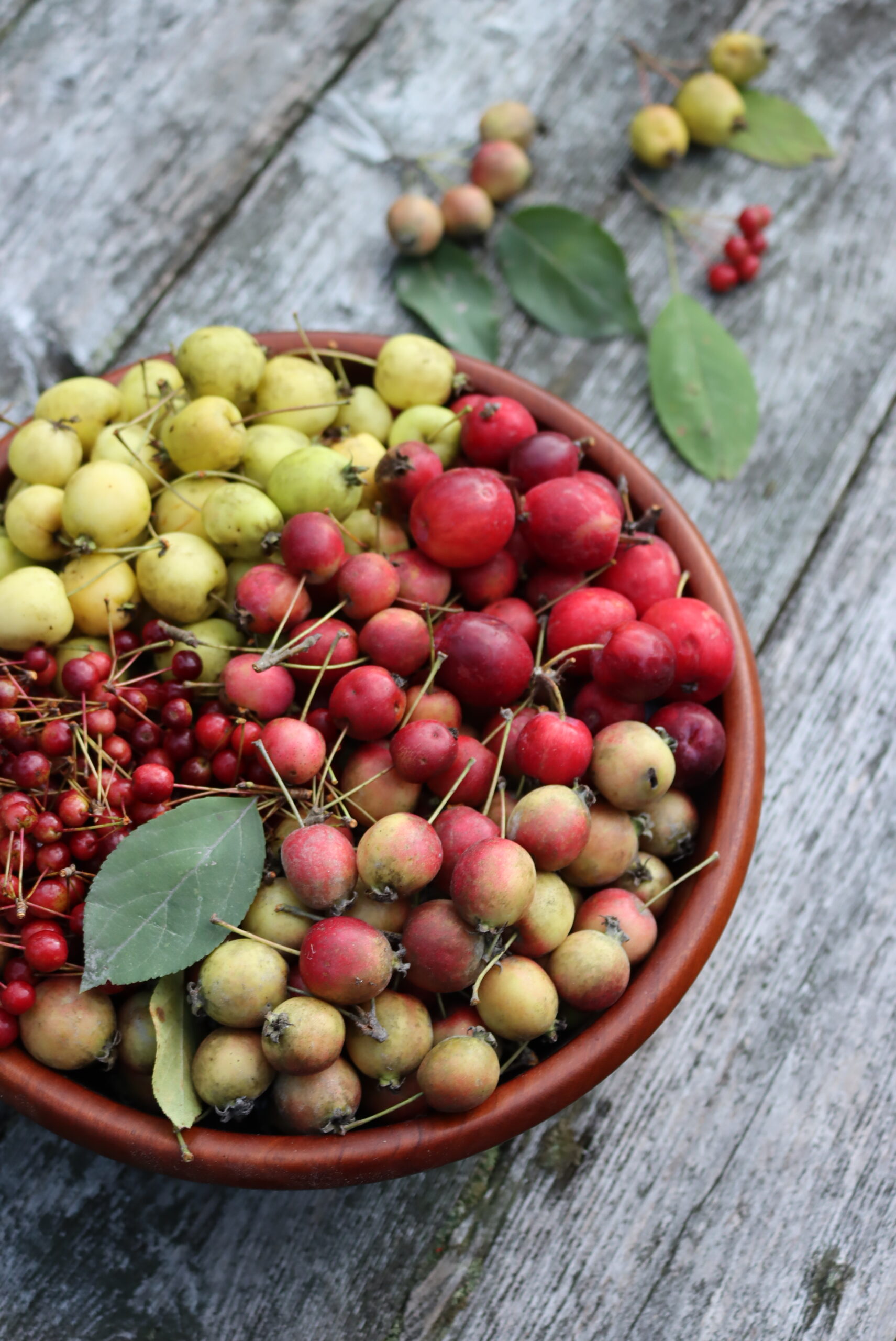
Wild Apple Look-Alikes
One highly toxic lookalike to the wild apple is the Manchineel Tree (Hippomane mancinella), also called the manzanilla de la muerte or “little apple of death.” Thankfully, these are pretty rare, and not widely distributed. You really only need to worry about these in Florida and parts further south. There are a few keys to distinguishing them:
- The manchineel grows in tropical regions like Florida, the Bahamas, the Caribbean, and South and Central America.
- The manchineel grows on beaches, brackish swamps, and among mangroves.
- The manchineel has lustrous, leathery, elliptic yellow-green leaves that grow on long stalks.
- Manchineel fruits are sweet-scented, yellow or reddish, and born singly or in pairs. They contain a center stone that encloses 6 to 9 seeds.
Wild apples are also sometimes confused with the edible Wild American Plum (Prunus americana). You can identify it in the following ways:
- American plums usually have short, crooked trunks with open, graceful crowns.
- American plum trunks have scaly black bark.
- American plums have white, five-petaled flowers that grow in clusters of 2 to 5.
- American plum fruits ripen to a shiny, bright red or purple.
- American plums regularly sucker and form colonies.
- The fruit of plums has a large single seed (similar to cultivated plums, peaches or cherries)
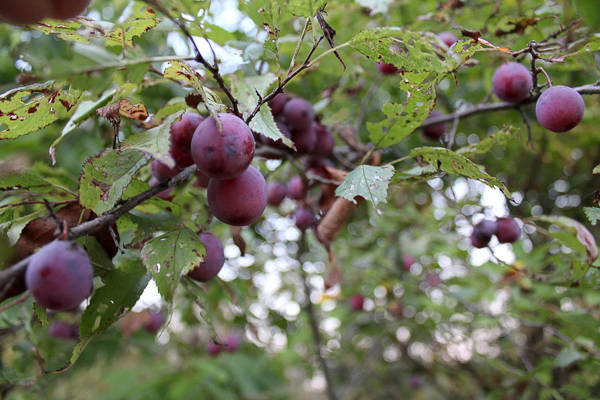
Wild Apples may also be confused with edible wild hawthorns (Crataegus spp.). However, hawthorns can be distinguished from wild apples in the following ways:
- Most Hawthorns have pronounced thorns that grow 1 to 3 inches long.
- Hawthorns typically flower before leafing out.
- Hawthorn fruits tend to be smaller than wild apples, and most are less than 1 inch in diameter.
- The fruits have up to five woody seeds at the center that stick together in a tight clump, forming a stone-like structure.
- Hawthorns have a much more pronounced blossom end remaining on the fruit.
- Hawthorn leaves come in many shapes, but they usually have serrated margins and don’t generally look like apple leaves.
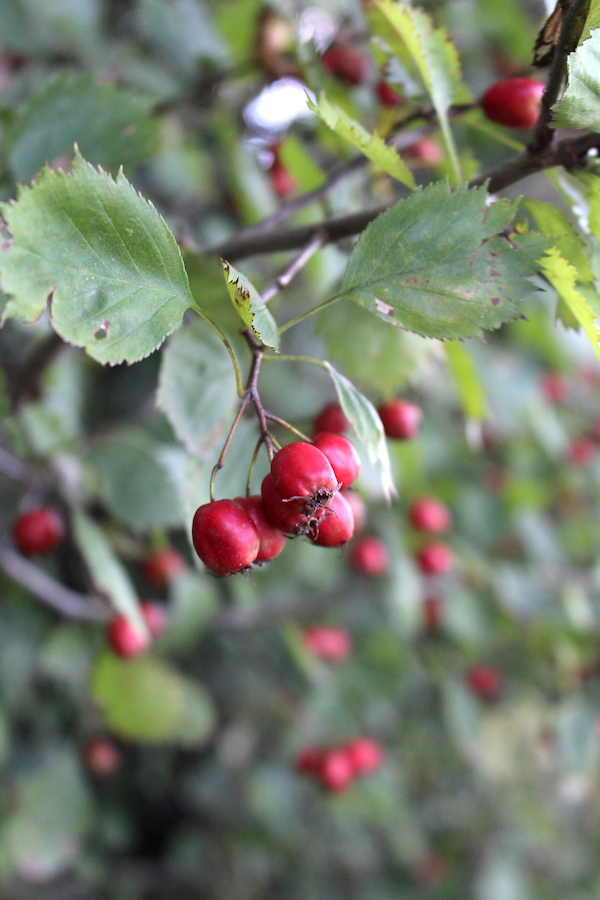
Ways to Use Wild Apples
You can use wild apples all the ways you use domesticated apples, but they’re usually much tarter than domesticated apple cultivars. Harvesting them after a frost has hit them when they’re fully ripe and soft can make them more mellow and sweet.
However, there are also plenty of ways to embrace their tangy side. Wild apple’s flavors add depth to sweet dishes. You can use them alone or mix them with domesticated apples for a milder effect in pies, crisps, sauces, and other baked goods.
They’re also relatively easy to preserve. You can pickle, dry, can, or ferment wild apples. If you enjoy fermenting your beverages, try using some of your wild apples in cider or mead.
One of the easiest ways to incorporate wild apples into your herbal practice is to eat or drink their juice. Wild apples are full of vitamin C, fiber, and antioxidants, making them a great fruit to add to your diet.
Alternatively, you can use wild apples externally to improve skin health and soothe dryness and irritation. Try making a wild apple extract or adding it to your own homemade skin care products.
If you’d like to dive further into wild apple remedies, you can try working with the blossoms, leaves, or bark, which have all been used in remedies in small quantities. Historically, these were typically used in infusions. Remember that the leaves and bark are very astringent, and large amounts can cause stomach pain and other issues.
The wood from apple trees is also a good choice for carpenters. People often use apple wood for furniture making and other fine woodworking.
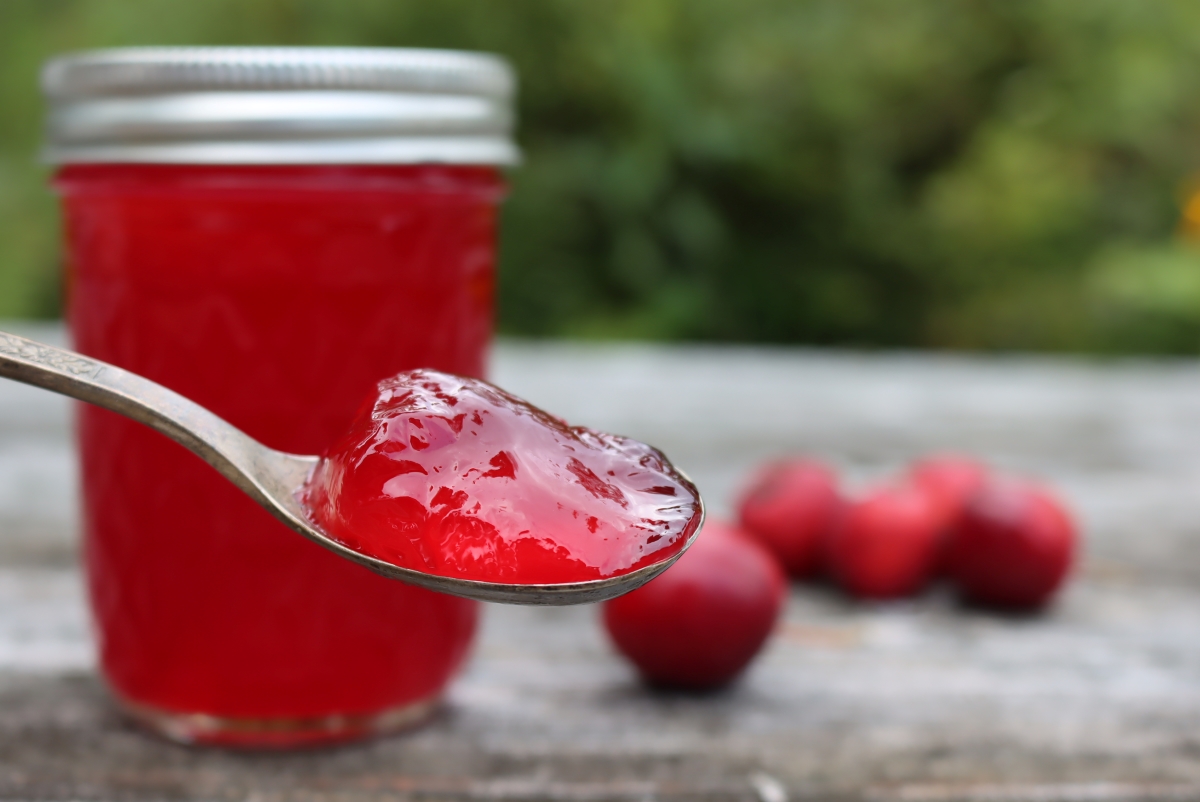
Wild Apples Recipes
- One of the simplest crabapple recipes is a crabapple jelly, which comes together with just crabapples and sugar.
- For a seasonal celebration, try these adorable Crabapple & Rosemary Hand Pies from Gather Victoria.
- Crabapples’ tangy flavor pairs excellently with a bit of maple syrup in this Maple Crabapple Butter recipe from The Forager Chef.
- Put up plenty of wild apples for later with this Crabapple Sauce recipe from Mama’s Homestead.
- Make an exciting autumn side dish with this Spice Crab Apple Pickle recipe from The Spruce.
- New to fermenting? Try this Fermented Crabapple Cider with Beatyberries recipe from Tyrant Farms. You can make a delicious sparkling cider without special equipment or commercial yeast.
- If you’re feeling adventurous, try this foraged take on British lemon curd with this Wild Apple Curd recipe from forager Rachel Lambert.
